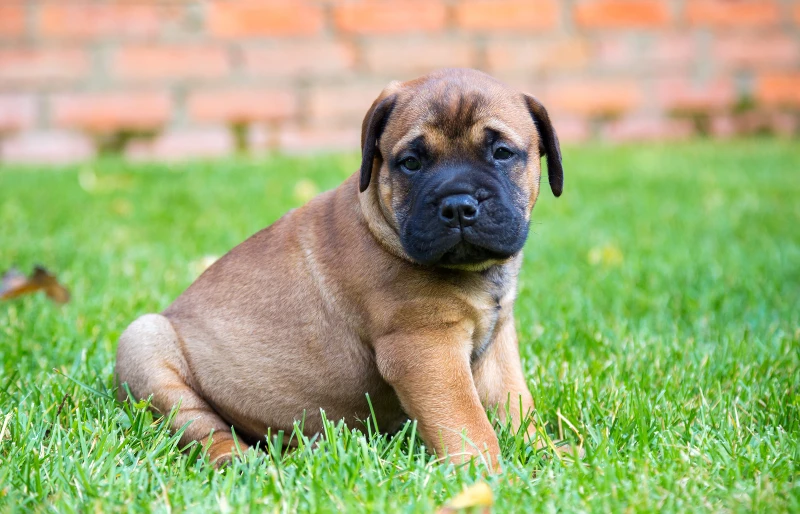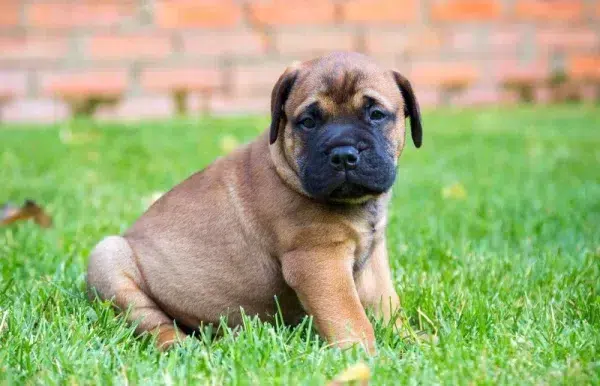Becoming the proud owner of a Mastiff, whether from puppy or adolescence, can be exciting and intimidating because they are large, powerful-looking dogs. One of the most responsible things you can do for your Mastiff is to provide it with correct training. We understand this can be overwhelming, especially with a large breed like the Mastiff.
The good news is that this process doesn’t need to be stressful, and it is not as hard as you may fear. We are here to help! The nine important tips that we provide for you in this article will get you started with all the confidence you need.
A Quick Note Before You Start
As you know, Mastiffs are large dogs that have an instinct to protect, as that’s what they were initially bred to do. Their devotion to protecting their family and their strength and size are good reasons to provide proper training. However, they are also a calm and gentle breed that is willing to please their humans, so they can be relatively easy to train.
Before you begin training your Mastiff, ensure you have a plan and method to which you and all your family members agree to stick. Consider planning a schedule and try your best to stick to it. Remember that every dog is unique; some may learn faster than others, and some methods may work better. It’s important to figure out what works for you and your dog and to stay motivated and consistent.
Here are some important and helpful tips to get you started:
The 9 Important Tips for Training a Mastiff
1. Start Early
Training should start as early in your dog’s life as possible. The best time to start is around 8–10 weeks, but if you have adopted an older Mastiff, begin training as soon as your dog has settled in. The early weeks of their lives are a significant time to create a solid foundation, and the earlier you begin to train in obedience, the sooner and easier you will have a dog that listens and obeys.
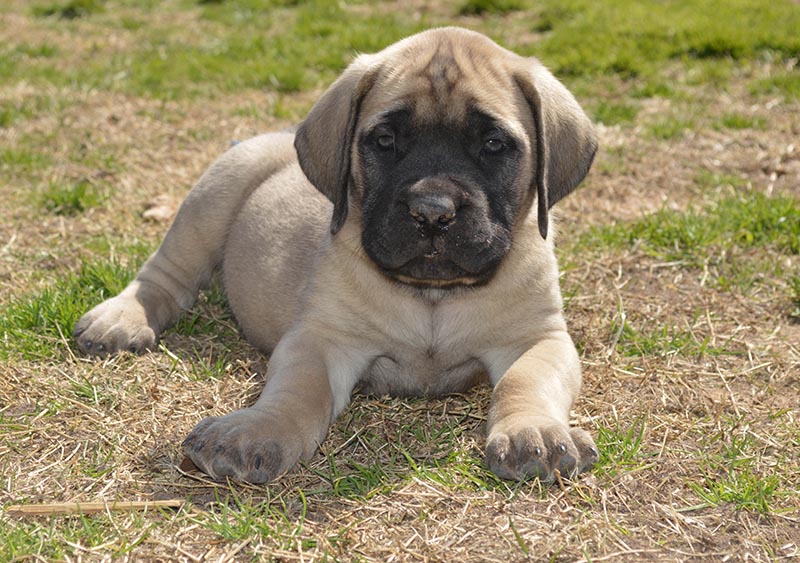
2. Start Early Socialization
Early socialization is as important as early training. Socializing your dog includes introducing them to friends and family, exposing them to other dogs and environments to get them accustomed to change, and meeting new people and dogs as they age. Early socialization helps your puppy grow up to be a well-behaved and well-rounded dog.
This is especially important with Mastiffs as they can be wary of strangers, so get your pup to the park and engage with other dogs as often as you can.
3. Use Positive Reinforcement
The key to training most dogs is to use positive reinforcement. Positive reinforcement is the use of praise and treats to reward your dog for wanted behavior. Your dog will associate the behavior with something positive and quickly learn what it should and shouldn’t do. It is the most effective form of training that improves your bond with your dog.
However, you need to be careful that you don’t unintentionally reward unwanted behavior, such as when you show your dog excitement when it jumps up at you to greet you. Instead, you should wait until your dog is calm and then give it some attention.

4. Keep Training Sessions Short and Fun
Mastiffs can be lazy, and that is one reason to keep your training sessions short. If your dog loses interest or becomes tired, your efforts will be ineffective. It should be fun for both of you! So, it’s important to find ways to keep your dog and yourself interested. Try to keep the session at a maximum of 15 minutes and try two a day.
See how your pup responds and add or subtract time or change it up. As soon as your dog shows signs of being bored or tired, you should try to stop on a positive note by practicing something your pup knows really well. Then, give it lots of praise when it follows your commands.
5. Stay Consistent
Consistency is imperative to training. If things change too often, your dog will get confused, and you will need to start from square one. You should be consistent in your command words and methods, have the same tone, have a consistent schedule, and be consistent when your dog gets rewarded. Everyone in the family should be on the same page so that your dog doesn’t get confused.
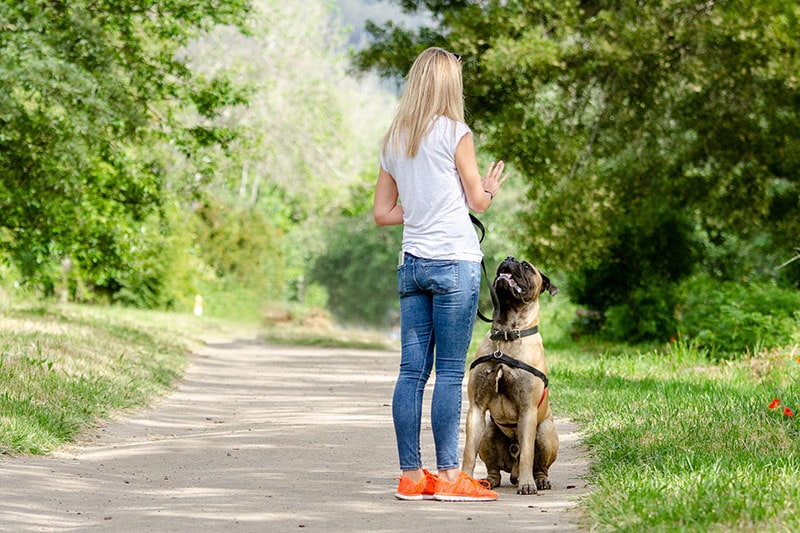
6. Be Patient and Positive
Your attitude makes a huge difference in how training goes, and patience is critical to effective training. Remember that some days and sessions will go better than others, and your dog has no malicious intent to frustrate you. Being impatient will lead to frustration, which could impact your training session and make it less enjoyable for both of you.
If you are not in the right frame of mind, you could lash out and turn the session into a negative experience your dog will not want to engage in again.
7. Don’t Punish Your Dog
Punishing your dog for unwanted behavior is an old and cruel training method. You should never punish your dog, even though it may frustrate you during training. Punishment only focuses on trying to stop unwanted behavior but does not teach the right behavior.
It may cause your dog to become fearful of you and, in some cases, aggressive.
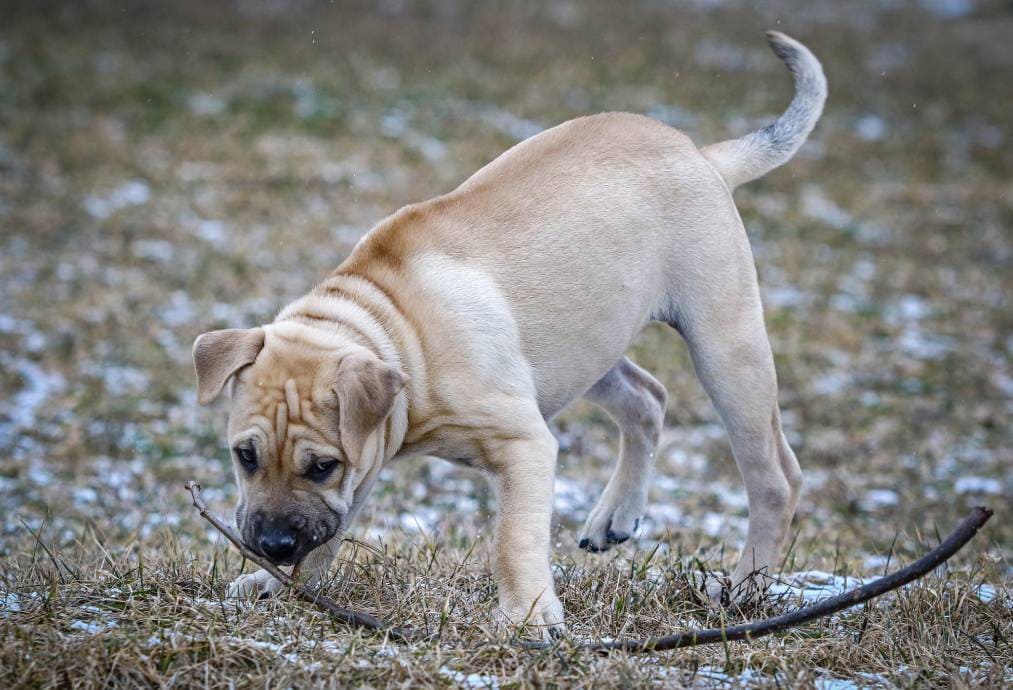
8. Start with the Basics
Always start with the basics when training your dog. House training will be one of the first things you teach your puppy, and it will help teach them a lot of basic command words such as “sit,” “stay,” and “come.” These commands will be the foundation of further training.
9. Choose the Right Environment
Choosing your training area wisely is important for effective training, especially for a curious pup. Start training in a quiet area where your puppy cannot be easily distracted. You don’t want to be competing for your dog’s attention, which can lead to you both getting frustrated.
Furthermore, you can’t expect your puppy to focus on training when there are too many distractions around them. As your puppy learns, you can progress to busier areas, but remember that it will take time to build your dog’s confidence. You may be faced with some challenges when you change things up a bit and transition to a public area. Just stay patient and remember to keep the sessions fun.
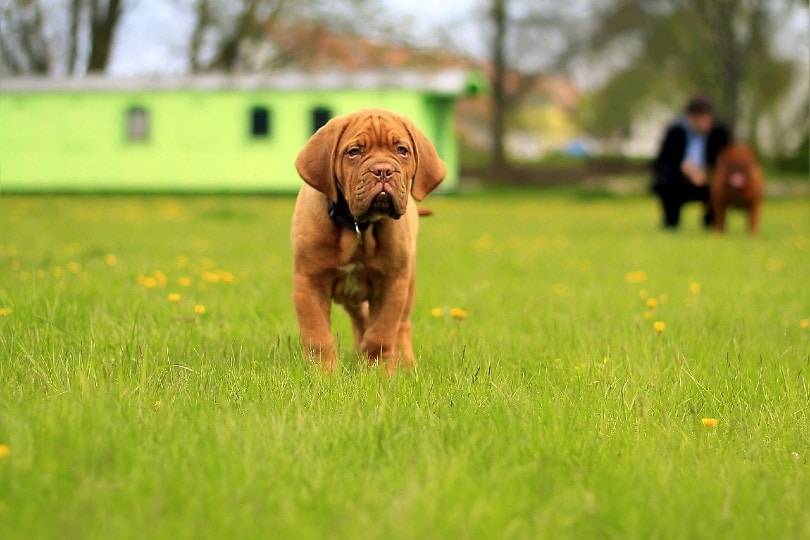
Tips to House Train Your Mastiff Puppy
House training is one of the first things you will teach your Mastiff puppy, so here are some tips to get you started:
- Limit your puppy’s intake of water at nighttime to help ensure that it is not going to bed with a full bladder.
- Be attentive while your puppy explores so that you can learn its cues and behaviors before going potty. If you are distracted, you may miss these vital signs, and house training may take longer.
- Always take your puppy outside with treats in your pocket so you don’t miss that crucial window of reinforcing the behavior.
- Try not to go longer than 20 minutes between potty breaks since most puppies cannot hold their urine for more than 20 minutes. This consistency and frequency in the schedule will help your pup learn and prevent accidents.
- Again, patience is vital, and do not punish your pup for having an accident; just be sure you are there to reinforce the wanted behavior as it happens.
Conclusion
Training your Mastiff will require time, patience, and hard work, but it doesn’t need to be overwhelming. It’s best to establish a training schedule and have high-value treats available. Also, you should adjust your expectations when you see how your dog responds and start the process each day with a positive mindset.
Mastiffs are intelligent dogs that enjoy training when you keep the sessions short, and eventually, after a few weeks or months, your giant pup will become a well-behaved and loyal family member.
Featured Image Credit: Sergey Lavrentev, Shutterstock
Contents
- A Quick Note Before You Start
- The 9 Important Tips for Training a Mastiff
- 1. Start Early
- 2. Start Early Socialization
- 3. Use Positive Reinforcement
- 4. Keep Training Sessions Short and Fun
- 5. Stay Consistent
- 6. Be Patient and Positive
- 7. Don’t Punish Your Dog
- 8. Start with the Basics
- 9. Choose the Right Environment
- Tips to House Train Your Mastiff Puppy
- Conclusion

